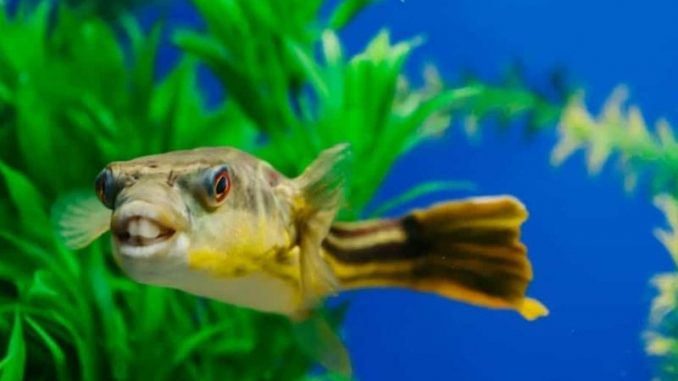
The fahaka puffer is a freshwater fish belonging to the Tetraodontidae, or pufferfish, family.
Pufferfish are well-known among aquarists because of their unique natural defense systems, which include the ability to inflate and carry the toxin tetrodotoxin when threatened.
Fahaka pufferfish are large, with some able to grow up to 18 inches long.
Because their large size and aggression require the fish to be kept alone in a spacious tank, fahaka puffers aren’t commonly kept by aquarists.
TABLE OF CONTENTS
Fahaka Puffer Facts & Overview
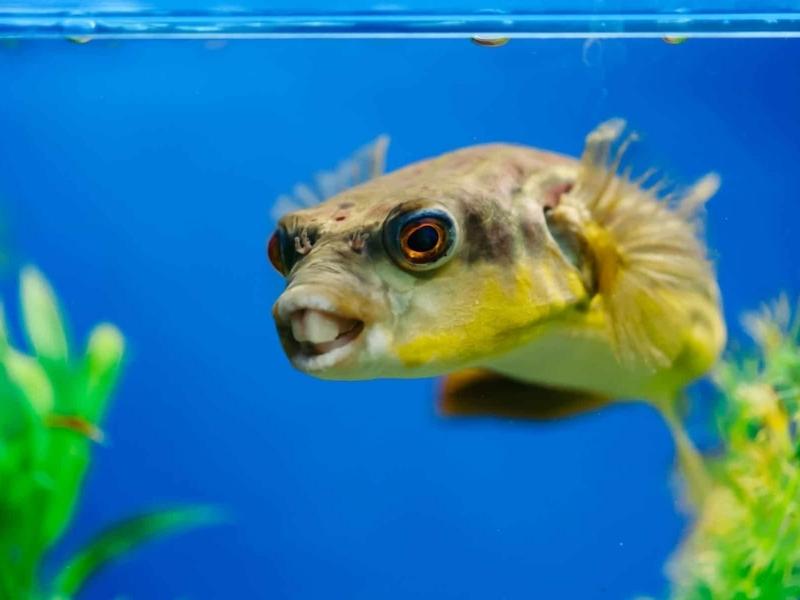
| Scientific name: | Paracheirodon innesi |
| Common names | Nile puffer, globe fish, lineatus puffer, band puffer |
| Distribution: | Africa: Nile, Chad, Niger, Volta, Gambia, Geba |
| Size: | 15–18 inches |
| Life expectancy: | 10 years |
| Color: | Gray-brown with yellow stripes |
| Diet: | Molluscivore |
| Temperament: | Aggressive |
| Minimum tank size: | 100+ gallons |
| Temperature: | 75–78°F (23–25°C) |
| pH: | 7–8 |
| Hardness: | 10–15 dGH |
| Care level: | Intermediate |
| Breeding: | Egg Scatterer |
Origin
The fahaka puffer is a tropical freshwater fish that typically inhabits large rivers and waters in the east and west of Africa.
These puffers are known colloquially as ‘Nile puffers’ because the species is found throughout the length of the River Nile.
The species was first written about in 1758 by the Swedish zoologist C. Linnaeus.
Fahaka pufferfish live among thickly planted areas at the bottom, where they experience a water temperature of approximately 76°F.
These fish are demersal, or “bottom-living,” meaning they live and feed at the bottom of large bodies of water. With that said, fahaka puffers spend much of their time swimming in the open and feeding on shellfish.
They aren’t often bred commercially, partially explaining their rarity in aquarist circles. Most fahaka puffers, found in homes, have been wild-caught.
Fahaka Puffer Size & Lifespan
Fahaka puffers grow up to 18 inches long, and there’s no difference in size or appearance between males and females, making it almost impossible to tell them apart, until the spawning period.
They have an average lifespan of 10 years, although they can live longer.
Availability
Fahaka pufferfish are readily available at many pet stores that specialize in aquatic creatures.
Even though this species isn’t as common as some others in the pet trade as it’s difficult to breed, the fish is well-loved, so many aquarists work to ensure it is available.
Fahaka puffers typically cost between $30 to $60, but the cost of delivery may be more if the fish is imported from abroad.
If you’re interested in purchasing a fahaka puffer, you can buy this freshwater fish at AquariumFish.net or Aqua-Imports.com.
Appearance & Behavior
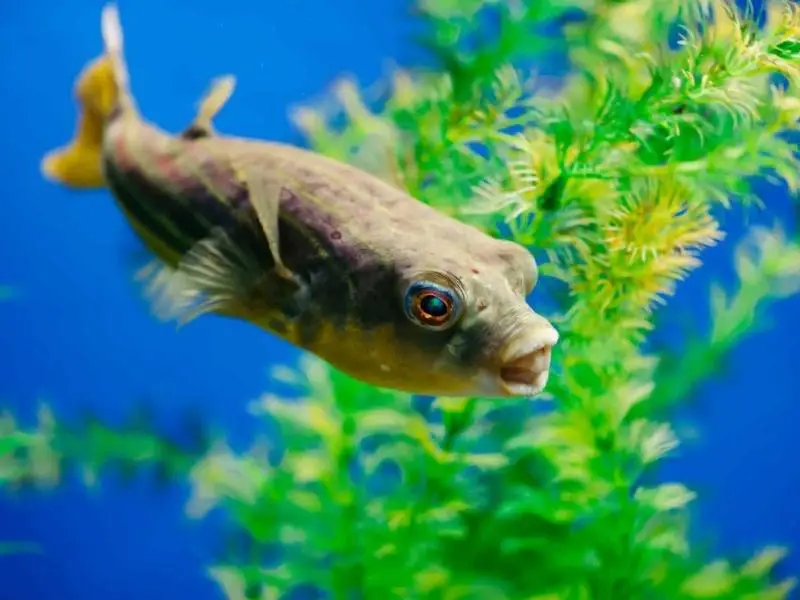
Fahaka puffers are known for their striking yellow stripes, and ability to inflate when in danger.
However, their aggressive behavior means they cannot share a tank with other aquatic creatures, which can cause issues for owners.
Colors, Patterns, Fins, and Sex Differences
The fahaka pufferfish is a large, long fish that is gray-brown in color, with golden banding.
They have bulging bright orange eyes, and an almost white belly, lighter than the rest of their body.
Their individual coloring and marking can vary with age and environment. Younger fahakas tend to have a mottled coloration, whereas adults can appear darker in color.
The species changes color depending on its mood and puffs itself up when it senses a threat. When fahaka puffers are inflated, spikes will appear on their skin to protect the fish from predators.
These fish don’t have any hard scales on their bodies.
They also have teeth and carry poison, so the combination of these defense mechanisms, along with the species’ ability to inflate and reveal spikes, keeps fahaka puffers relatively safe from predators.
Telling the difference between a male and female fahaka puffer is difficult because these fish don’t show any sexual dimorphism.
However, females appear rounder than males when they’re carrying eggs.
Typical Behavior
Fahaka pufferfish are known for being extremely aggressive towards other fish, especially in the face of perceived danger.
They are generally friendly with their owners, although they may bite fingers if fed by hand.
These fish are intelligent, and the species’ behavior varies among individuals.
They sleep at night and are active during the day when they enjoy feeding and digging in the sand.
Fahaka puffers do swim in the open, but they also enjoy areas where the fish can hide, such as in small caves and behind rocks.
Fahaka Puffer Care & Tank Requirements
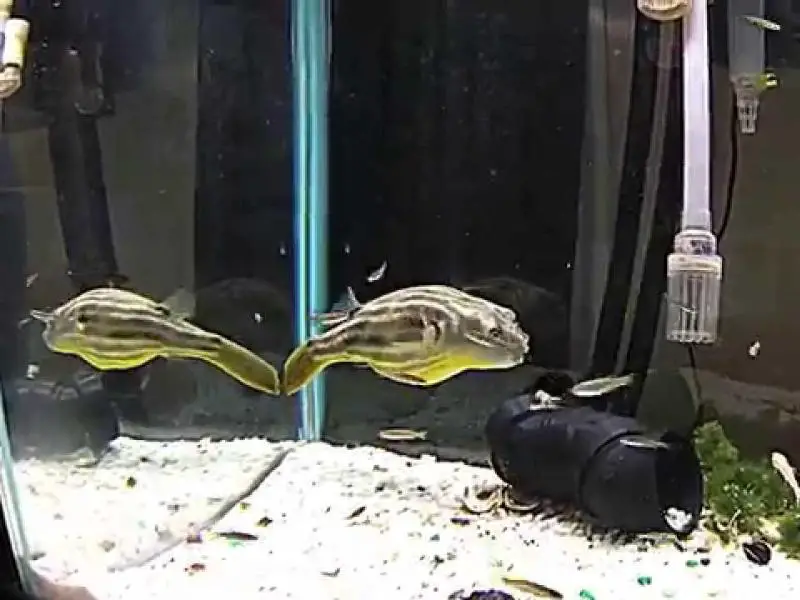
Any aquarist hoping to keep a fahaka puffer should be aware of its specific environmental needs.
While these entertaining fish are a joy to look after, you’ll need to keep them separate from most other fish, in their own, spacious tank.
Fahaka pufferfish enjoy warm tank water that resembles their tropical African habitat.
In the wild, they are successful predators, preferring to eat mollusks, bugs, and other invertebrates. Therefore, these puffers should be fed a diet of foods that includes shrimp, mussels, and cockles.
Habitat and Tank Requirements
Give the fahaka puffer a warm tank with water temperatures between 75 and 78°F, to mimic the tropical climate of their natural habitat.
Fahaka puffers are sensitive to soft water, so you should keep their water between 10–15 dGh, and with an acidity of 7.0 to 8.0 pH. Never put a puffer in a soft water tank.
This species is sensitive to the presence of ammonium and nitrite in the tank.
Use test kits to regularly test the tank water, and change when necessary, because these fish don’t have scales or gill covers to protect themselves from these common hard minerals.
They are incredibly messy eaters, so owners should invest in a powerful filtration system, ideally one which can replace the entire tank volume at least five times per hour.
In the wild, fahaka puffers like to dig and bury themselves in the sand.
Providing sand at the bottom of the tank will replicate these conditions to make the fish feel at home. The smoother the sand, the better for this fish.
Tank Conditions
The tank conditions and tank size for a fahaka puffer should be as follows:
| Water type: | Hard, freshwater |
| Tank size: | Minimum 100 gallons |
| Water temperature: | 75–78ºF |
| Substrate: | Thick layer of sand, rocks |
| Tank setup: | Plants, caves, decorations, etc. |
| Acidity: | 7.0–8.0 pH |
| Water hardness: | 10–15 dGH |
| Filter: | Yes, a powerful filtration system to avoid disease |
| Bubbler: | Optional |
This includes hard water, a temperature of between 75 and 78ºF, and lots of sand to allow the fish to express natural behaviors. The tank conditions for fahaka pufferfish should be as close to their natural habitat as possible.
Disease
Fahaka puffers don’t have scales or gill covers, making them susceptible to skin diseases and other ailments typical to tank-kept tropical fish.
Ich
Fahaka puffers are especially vulnerable to ich, also known as white spot disease.
The first signs start with these fish flicking against objects, and progress to a rash of small white spots appearing across the body.
You can cure ich by temporarily raising the water tank temperature to 82ºF, and treating the water with ich medication from a pet store.
Flukes
Fahaka puffers can be affected by flukes, which are parasites that attach to the fish’s body and gills.
The symptoms and signs of flukes include excessive amounts of mucus, and the puffer rubbing itself against solid surfaces.
Flukes can be treated by adding anti-parasitic medication to the aquarium.
Infection
Fahaka puffers also suffer from fungal and bacterial infections. In the event of an infection, fish should be isolated from any tank mates.
In this species, fungal infections will develop with white growths on the fishs’ bodies. To treat this type of infection, treat the tank water with anti-fungal medication.
Symptoms of a bacterial infection in a fahaka puffer include red patches or ulcers on the skin. Douse the water with antibacterial medication to treat the infection.
Tank Mates
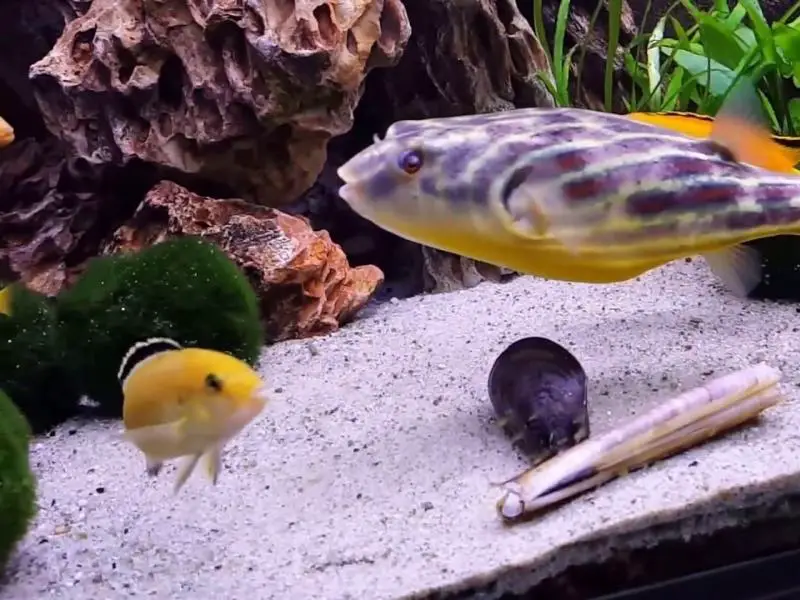
Because of their aggressive nature, it’s not recommended to keep a fahaka pufferfish in a tank with other tank mates.
These puffers are known to fight with most other fish they come into contact with, including members of their own species.
If the puffer is juvenile, or less aggressive than most, it can share a tank with some species. In this case, great tank mates for fahaka puffers include:
- Tinfoil barbs
- Silver dollars
- Guppies
- Tetras
Diet and Feeding
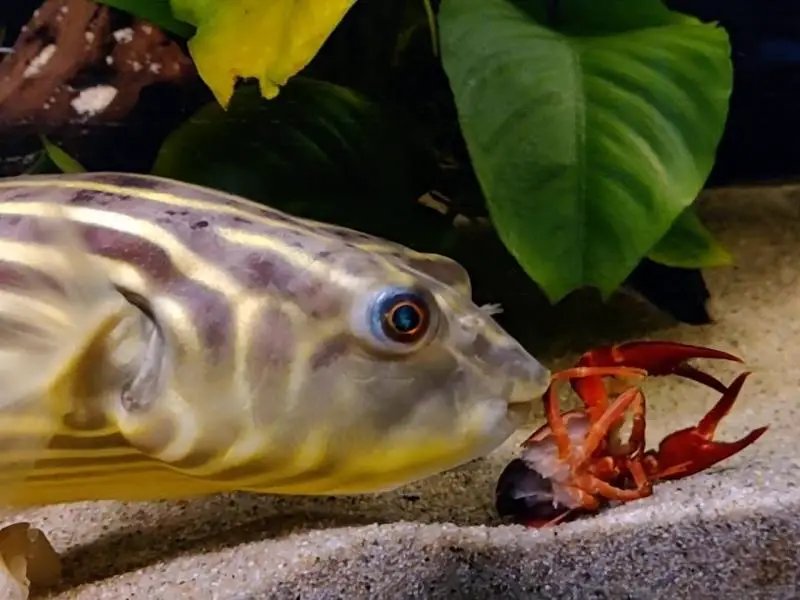
In nature, fahaka puffers feed on mollusks, insects, and crustaceans, so the fish should follow a similar diet in an aquarium. The diet should consist mostly of snails, crabs, shrimp, and crayfish.
These fish need a variety of hard-shelled foods in their diet, such as shellfish and crabs, to wear down their teeth. If the puffer’s teeth grow too long, the teeth will need to be clipped.
Their diet changes as the fish grow larger. Juvenile fahakas thrive on a diet of krill and snails.
Once the species is over six inches long, its diet should be updated to contain foods like lobster and mussels.
Juvenile puffers should be fed every other day, however, when these fish are fully grown, they’ll only need feeding two or three times per week.
Breeding
The fahaka puffer is not an easy species to breed because of its aggressive personality, however, commercial breeding is possible.
The males and females should have plenty of space in the tank so the fish don’t fight for territory.
Fahaka pufferfish become sexually mature at around one year old, and when a female is ready to spawn, she will develop a visible ovipositor.
During spawning time, the male and female fahaka puffers will swim near each other in the aquarium. The male will then invert himself under the female.
The male will position himself so that the pair’s sexual organs are in contact. Once in position, the male will fertilize the eggs. Eggs and sperm will then be released simultaneously.
As soon as all the eggs have sunk to the bottom of the tank and the two parents have stopped spawning, the fahaka puffers should be removed from the tank.
The eggs hatch within 96 hours, and the fry become free-swimming within a week.
Fry should be fed regularly to stay healthy and to increase the chance of survival.
Should You Get a Fahaka Puffer for Your Aquarium?
If you’re looking for a peaceful fish that can happily share its tank with others, a fahaka puffer may not be suitable for you.
However, if you’re looking for a unique fish friend that will keep you entertained with its fascinating antics, this species is ideal.
When provided with a large enough tank and kept away from tank mates, fahaka puffers make a quirky and interesting animal companion for any aquarist with enough space to house them.

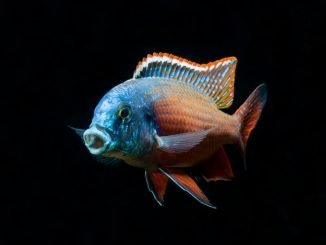
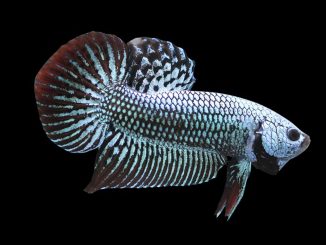
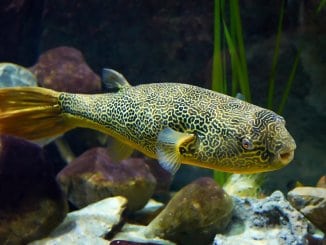
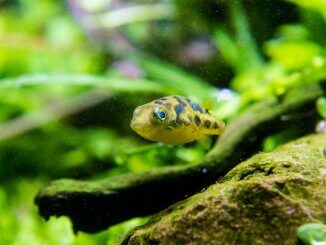
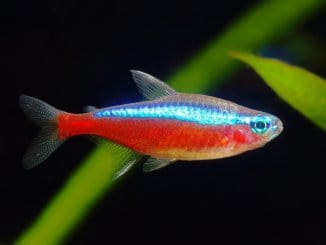
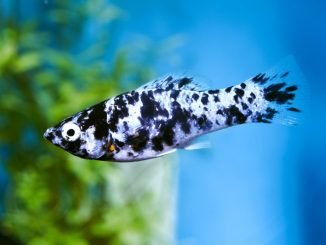
Be the first to comment